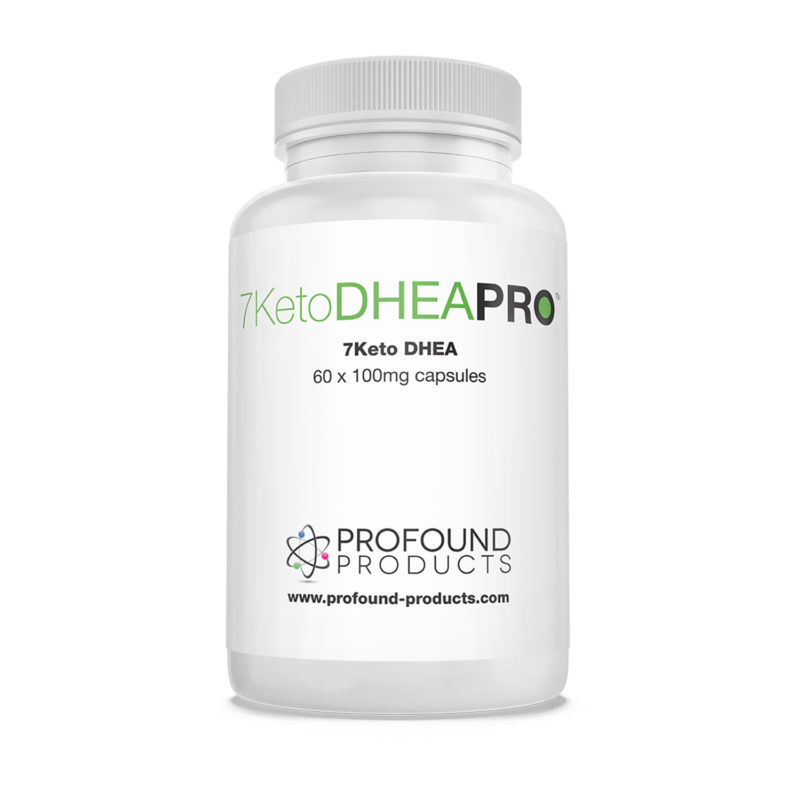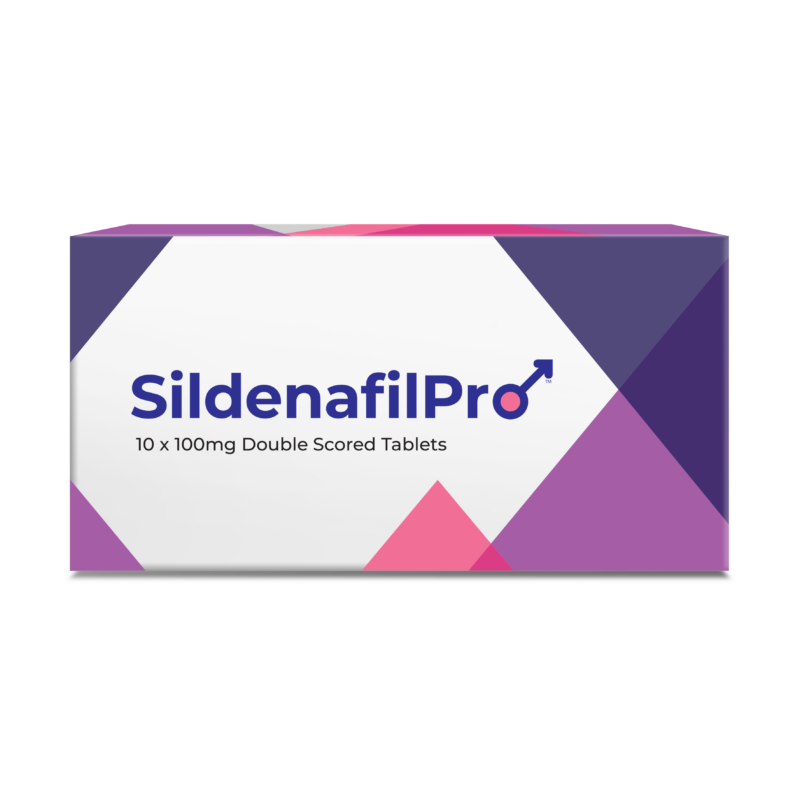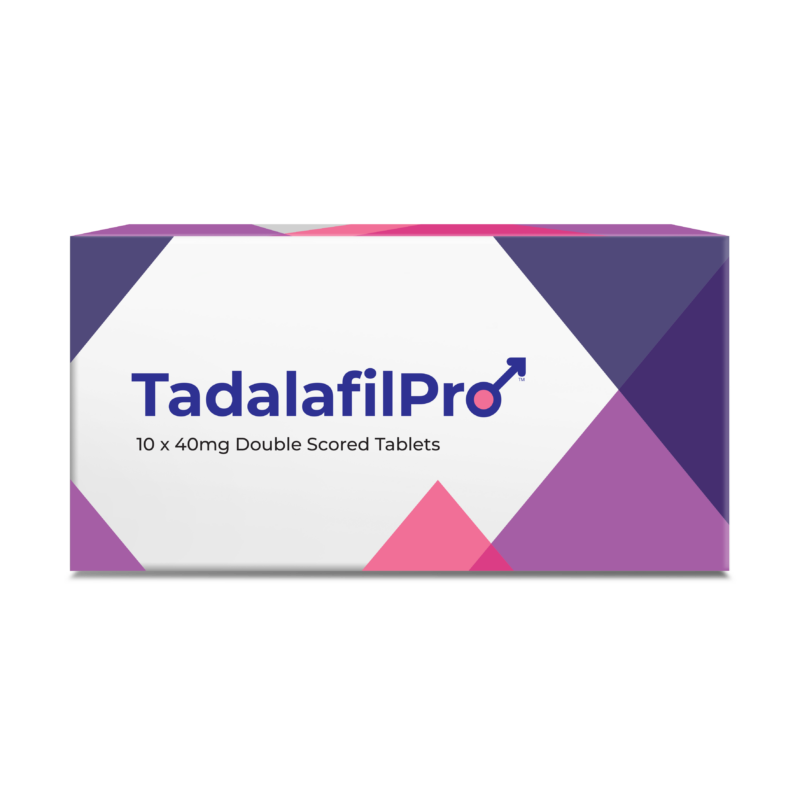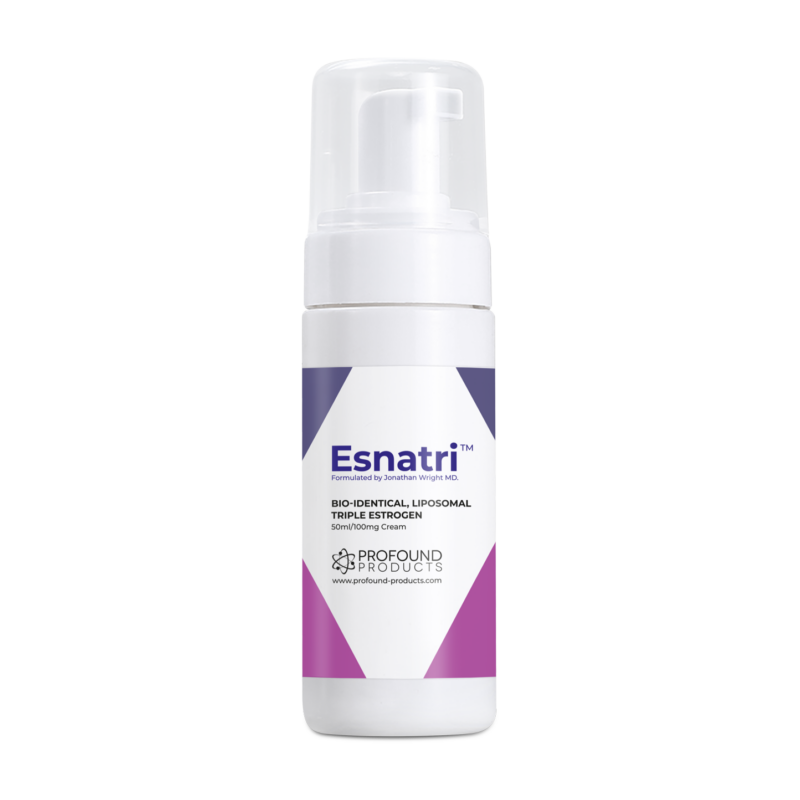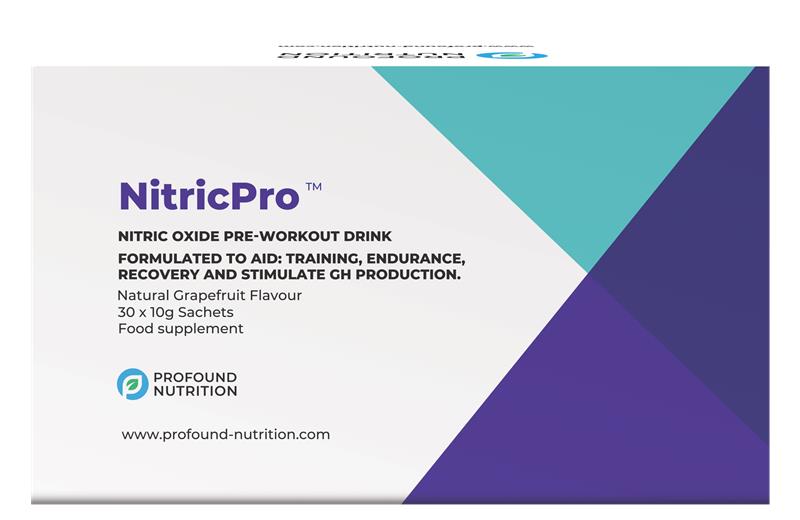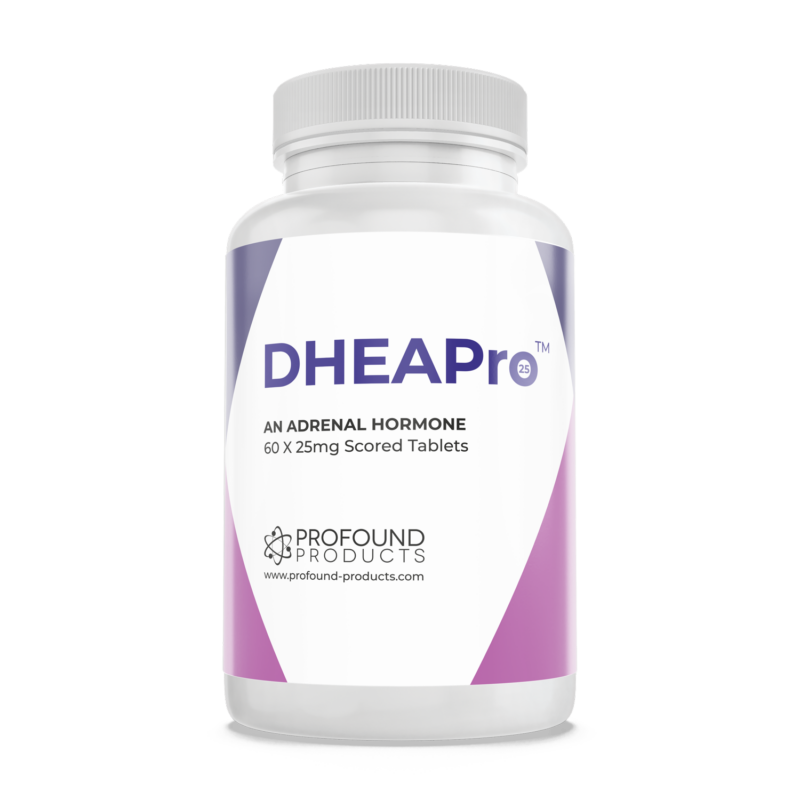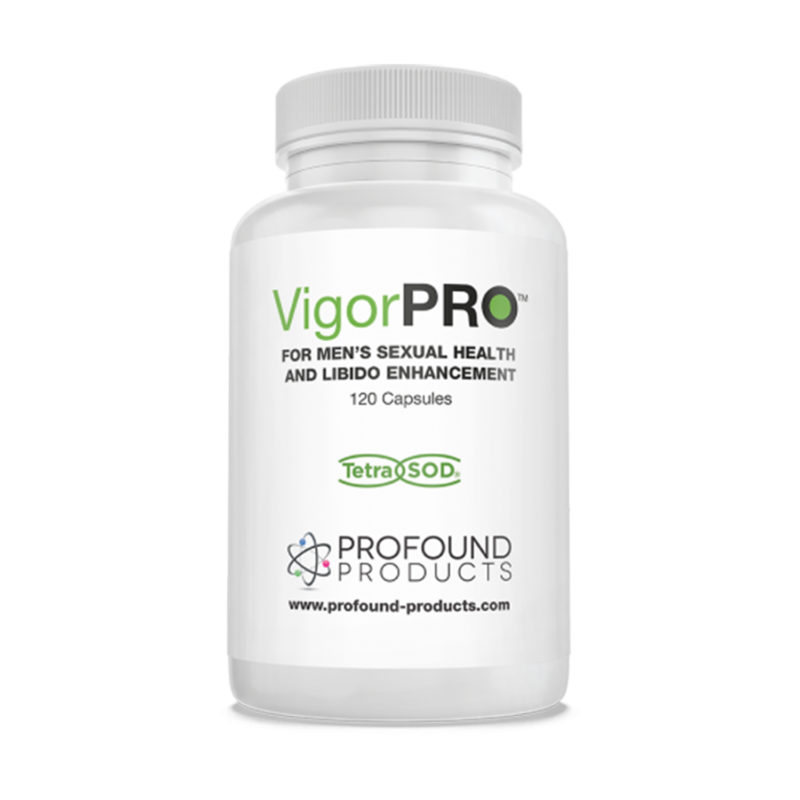Attitudes, Behaviour and the Maintenance of Sexual Function in Older People
The sexual act may vary from a simple physical release to an act of passion in an intensely felt and loving relationship. As older people, we may remember our sexual experiences when young and compare favourably the emotional satisfaction of sex now with the way we remember it then, (NCOA survey, 1998). Younger people, on the other hand, do not easily empathise with the sexuality of an older person and may underestimate the importance of sex in the lives of older people, (Heath, 1999).
Older people are pioneers in this new century, with fresh possibilities from the application of new science which were not available to our parents, giving us health and the possibility of good sexual function till late in life. In parallel with these changes expectations with regard to sexual fulfilment has increased, (Grigg, 1999).
I will discuss the use of hormones and chemical means to enhance arousal, and attempt to set this discussion of sexual function in the context of general health, as well as psycho-social and lifestyle influences, thereby addressing the concern that a bio-medical model is predominant and focused on pathology, (Borissova et al, 2000).
First, I will look briefly at the demographics of ageing and an example of its effect on the prevalence of sexual dysfunction
Surveys of sexual attitudes and lifestyles: With some exceptions most surveys in Europe and the USA have been on people under 50 and directed principally at issues of sexual health. We will look at surveys of older people and, in particular, at their views on sexual satisfaction. Physiology of sexual ageing: I will describe briefly some changes in physiology and function that accompany the process of ageing. Promoting sexual satisfaction: And finally as a clinician, I will discuss the use of hormones, pharmaceutical aids to sexual arousal, and lifestyle management directed at promoting satisfying sex. In older people this is, I believe, now more achievable than it ever was.
Demographics
It is evident in Western Europe that the population of older people is increasing. This increase relates to a greater life expectancy while the birth-rate is decreasing.
At the age of 65, men will live, on average, a further 15.8 and women 17.6 years. A child born in 1997 can expect to live 29 years longer than one born in 1900.Life expectancy is longest is France, Japan and Austria, while life expectancy in America is 27th in world rankings. Between 1998 and 2025 the number of people over 65 (in the Western world) will increase by 200%. By 2030 people over 65 will account for one in five people of the population.
However, birth-rates in the UK of 1.8 per couple are less than that required for population figures to remain constant, and new data reported at a UN conference this year indicates declining fertility in the developing world will lead to birth rates at less than replacement levels within 20 years. A decline in world population is then predicted to occur from the mid twenty-first century [Sunday Times March 17th 2002]
As the population ages, an increase in the prevalence of sexual dysfunction is predicted. For instance, erectile dysfunction by 2025 will affect approximately 350 million men worldwide, with only 20% seeking treatment, (Ayta, 1999).
Sexual Attitudes and Behaviour of Older People
Surveys of the sexual attitudes and behaviour of older people have been less studied than they have in those under 50. This may plausibly be taken to reflect the negative attitude in society to the sexuality of older people (ageism) and, more recently, the relatively greater importance that has been given to the spread of sexually transmitted diseases and in-particular HIV.
The Kinsey Report, (Kinsey et al, 1948, 1953) in the 40’s and 50’s was ground-breaking and gave fresh insight into the varied nature of sexual lifestyles. But his samples were, for the most part, voluntary (from prisons, armed services, colleges and informal networks) and his findings were therefore unrepresentative: they cannot be generalised to the wider US population (Cochran et al, 1953). There were far fewer people in the oldest age bands and those statistics were also unreliable. Notwithstanding the use of Kinsey’s data in the context of recent HIV/AIDS surveys, it indicates the absence of other reliable data for that time.
The US consumer’s report (Becker) in the 70’s on sexual attitudes and behaviour addressed specifically people over 50 of age. The author coined the phrase for his respondents ‘the silent generation’. Though he found those who were in their 70’s and 80’s were less willing to talk about sex respondents they still attached importance to their sexuality. An increasing range of sexual activity was reported with age. There was a poor correlation between sexual satisfaction and sexual dysfunction: for example, individuals who reported problems with intercourse due to arthritis of the hips, did not think reduced mobility affected the quality of their sexual relationship.
In general, the continuation of sexual activity was found to decline in line with interest. Importance continued to be given to physical intimacy between a couple in the absence of penetrative sex. The National Survey of Sexual Attitudes and Lifestyles (NATSAL), 2001 is a major recent study in the UK with a cut-off age of 50 and it was reported by Johnson et al. This survey reported sexual activity declining with age and limited by the availability or otherwise of a partner.
The frequency of sexual activity related inversely to the length of a relationship, and was considered to partly account for the decline in sexual activity with age.
Between the 2nd to 5th year of a relationship the frequency of sexual activity halved. The survey found a wide variation between individuals but the highest rates of intercourse, (the ‘honeymoon’ period of a relationship) occurred in the first 2 years.
The National Council on Aging (NCOA), 1998 reported on the sexual behaviour and attitudes of 1300 Americans over the age of 60. Sixty-one percent of the men and 37% of the women were sexually active. The lower frequency of sexual activity in women was attributed to the relative lack of male partners and greater longevity of women. Thirty-nine percent reported that they were satisfied with the amount of sex they had, even if they reported no sexual activity. The men reported twice as frequently as the women that they wanted more sex. Two thirds of the respondents said their sex lives were more emotionally satisfying now than when they were in their 40’s. Seventy-nine percent of the men and 66% of the women said maintaining an active sex life was an important part of their relationship. When asked the qualities they sought in a partner 90% cited high moral character, pleasant personality, a sense of humour and intelligence. Women more frequently than men cited financial security and men, more than women, cited ‘a partner interested in sex’ (1).
The AARP/Modern Maturity Sexuality Survey (1999) was an American survey of 1,384 adults aged 45 and older. The objective was to ‘understand the role that sexuality plays in the quality of life of older adults’ and the way drugs such as Sildenafil (Ed.- aka Viagra ®) have affected the satisfaction of older adults with their sex lives. Respondents reported good sexual relationships as important to the quality of life of older people, but less important than the quality of interpersonal relationships. A generation gap was reported in attitudes towards sexuality that suggested older people will in future, be less accepting of abstinence than is the present older population.
The Organon Sexuality and Well-being Survey in Women aged 50-60, (2001) rated the importance of a satisfying sex life: 80% respondents said it was very important; 29% reported having sex five times or more a month, 16% four times a month, 17% two or three times a month and 18% once a month, or not at all. Sexual activity was rated more important by younger women (50-55), those who worked, had a partner they didn’t live with, or who were seeking treatment or currently taking HRT.
Sexual Physiology, function and the process of ageing
Is it not strange that desire should so many years outlive performance? (Shakespeare, Henry 4).
The language that describes the aging processes is sometimes whimsical and often unflattering. Commonly used terms which reflect the appearance of ageing such as ‘sag’, ‘droop’ and ‘Duchess hump’ refer to the sagging of skin with loss of its elasticity, the droop of the erect penis as the suspensory ligament stretches, and the humped neck in some older women, that indicates the bone loss of osteoporosis.
Biological rather than chronological age reflects the rate of aging and life expectancy. It can be quantified in many parameters of function: for instance in increased blood pressure, and reduced pulmonary function (FEV1) and the speed of reflex responses.
Both central and peripheral nervous systems are effected: Loss of cortical neurones are partly compensated by new inter-neuronal connections, but sensory receptors for vision, taste and hearing, touch, pressure, and joint sense (proprioception) are reduced. With the loss of these receptors our perception of stimuli, including sexual stimuli, is reduced. The glands of the penis and clitoris are amongst the most richly enervated areas of the body and loss of sensitivity by as much as a third occurs by the menopause.
In both sexes loss of hormone receptor sites occur in brain, heart, bone, muscle, skin and urogenital tract. In the urogenital tract, the ease of arousal, level of excitement and intensity of orgasm are reduced.
Other symptoms of the menopause common to both sexes include loss of libido, reduced energy, flattening of affect or even depression, sweating attacks or hot flushes and aches and pains in the joints. There are, of course, gender differences in the specifics of this decline:
In men, the action of androgens is to increase muscle mass and strength, reduce adipose tissue, maintain bone density, and improve energy and mood.
Androgens have two direct effects on sexual function: centrally they heighten libido and peripherally they increase the strength of erection (nitric oxide synthesis in penile tissue is androgen dependent). Testosterone Replacement Therapy (TRT), increases spontaneous nocturnal erections and the reports of sexual fantasy.
Experimentally, testosterone relaxes coronary artery smooth muscle (Yue 1994), and reduces post exercise ST segment depression in anginal patients (Jaffe, 1977). Serum testosterone levels are lower in patients who have had a myocardial infarct and in coronary artery disease. Testosterone may have a protective action against arteriosclerosis comparable to oestrogens (Ed.- this is the British spelling for estrogen), in premenopausal women.
The Andropause or Male Menopause
The reducing capacity for arousal with age may go un-remarked till erectile dysfunction occurs late in life. Whilst a decline in androgens commences in the third decade there is a steeper decline in the 50’s when the term ‘andropause’ or male menopause may be justified.
Symptoms of androgen decline in the aging male (ADAM) is variable between individuals, gradual in onset (in contrast to the female menopause), and subtle in clinical presentation, (Gooren , 1996, Morales , 2000).
The syndrome is characterised by:
- Diminished sexual desire and erectile quality, particularly nocturnal erections
- Changes in mood with decreased mental fluency, spatial orientation ability, fatigue, depression and anger
- Decreased lean body mass with loss of muscle volume and strength
- Decrease in body hair and skin alterations
- Decreased bone mineral density resulting in osteoporosis
- Increase in visceral fat
In women, by contrast, the menopause signifies an end to ovulation and lowered oestrogen/progesterone production from the ovary. There is then a transition to the post-menopausal state with changes to skin, mucosa and bone and subtly throughout all systems of the body. Symptoms include a reduction in sexual thoughts, sexual drive, and sexual arousal.
The action of oestrogens is to heighten sexual perception, imagination, and erotic dreams; cause spontaneous night-time arousal leading to lubrication of the vagina and clitoris; and increase pheromone secretions of sebaceous and sweat glands.
In pre-menopausal women sexuality is a function of emotional and physical health, and sex hormones influence disposition and mood. Progesterone has a moderate inhibiting effect, while oxytocin levels are highest at orgasm. Studies on the effects of HRT in post-menopausal women show findings comparable to women who are pre-menopausal, (Borissova, 2000).
There is a decline in melatonin levels and other sex hormones including DHEA, and growth hormone. In < 20% of women, thyroid hormone production is significantly reduced. Cortisol levels, usually, are not reduced during he life-course, while elevated cortisol reflects stress and increases intra-cellular processes of aging when prolonged.
So, with such a general decline in the body systems what can we do to maintain good function?
Promoting Satisfying Sex
As an anti-aging clinician, I believe ‘Optimal Health’ is the correct holistic goal and satisfying sex a part of physical and psychological well-being. These three attributes are closely related and satisfying sex within a couple’s relationship may be a barometer of good health. It follows measures to assist good general health: how we exercise and how much and how often, the quality of nutrition, correcting hyperlipidemia and obesity, and reducing severe prolonged stress, are factors that should accompany more specific treatments.
Hormone Replacement Therapy (HRT)
Hormone replacement may provide an immediate impact on energy, well-being and libido. Replacement therapy probably has optimal benefit when hormone levels parallel the bodies’ own diurnal rhythm to maintain hormone levels in the physiological range of, say, a 30 year old. Resultant alterations to the bodies’ homeostatic mechanisms are corrected when HRT is stopped.
What hormones should be considered? Particularly the sex hormones: oestrogen and progesterone and their precursors, pregnenolone and DHEA in women, and testosterone and DHEA in men; and thyroid hormone in thyroid depleted women. In women, a number of hormones positively influence female sexuality.
Oestrogens For Women
Numerous studies have shown oestrogens are associated with increased life expectancy, (Cauley, 1997). This is partly explained by a reduced risk of death from heart disease and by the multiple biological actions of oestrogen. Oestrogens are the treatment of choice for menopausal symptoms, osteoporosis and the prevention of fractures.
Medication needs to be individually tailored to avoid side-effects such as mastalgia (painful breasts), bloating, bleeding, ‘premenstrual tension’ and depression. In general, transdermal oestrogen may cause less mastalgia, nausea and deep vein thrombosis (DVT), while progestogens (the synthetic forms of progesterone) may cause depression. Benefits should be weighed against risks.
Breast cancer risk without taking oestrogens at all, or taking them for less than 2 years, is 45 per thousand women; the risk increases to 47 per thousand women after 5 years treatment with oestrogen, 52 after ten years, and 57 after 15 years (assuming treatment starts aged 50). Breast cancer risks are unaffected by the concurrent use of progesterone.
Progesterone has to be given, either cyclically for a minimum of 12 days per month, or in a combined continuous regime, to protect against the associated risk of endometrial cancer. Cyclical treatment is accompanied by regular bleeding at the end of the cycle, while continuous therapy may give rise to spotting or unpredictable bleeding which usually resolves within nine months.
Daily doses of oestrogen necessary to conserve bone are:
Conjugated equine oestrogens (Premarin ®) 0.625mg
Oestrogen sulphate (Harmogen ®) 1.5mg
Oestradiol 17b
Oral (Progynova ®, Climaval ®, etc) 1-2mg
Transdermal (Progynova TS ®) 0.05mg
Implant 50mg six monthly
[These are average doses for a post-menopausal woman in her sixth decade. Older women may require less]
Daily doses of oral progestogens for endometrial protection for 12 days per month
Norgestrel (Neogest ®) 0.15mg
Norethisterone (Micronor ®) 1mg
Medroxyprogesterone (Provera ®) 10mg (or 2.5mg continuously)
Dydrogesterone (Duphaston ®) 10mg
Micronised progesterone 200mg
Androgens, orally and by patch, have been shown to enhance libido and sexual activity in older women.
The European Menopause Survey (2000) and The Organon Sexuality and Well-being Survey in Women aged 50-60, (2001) showed 83% menopausal women have multiple symptoms: hot flushes (52%), sleeplessness (44%), mood swings or irritability (37%) and reduced sex drive (35%). Half of those with a reduced sex drive reported a significant reduction in feelings of self-worth, but only 2% sort treatment for this specific symptom.
Depression was reported by 25% of women and vaginal complaints by 21%. Nearly 50% experience four or more of the above symptoms. In this survey 59% of the women had previously received treatment for their symptoms, but most had not had treatment for either mood complaints or loss of libido.
For this group of women conventional HRT was found to be less beneficial in improving libido and mood than the combined oestrogenic, androgenic and progestogenic effects of tibolone (Livial ®).
Transdermal patches to deliver testosterone were used in a group of oophorectomised women, 31 to 56 years old, with impaired sexual function, (Shifren, 2000). A dose related increase in sexual thoughts, desires and activities was reported with doses of 150- 300 micrograms. There was also improvement in mood and well-being at the higher dose.
Dehydroepiandrosterone (DHEA)
An androgen, DHEA, was shown to improve energy and well-being in the 70 plus population in a double-blind cross-over study, (Morales and Yen, 1994).
The beneficial effects of DHEA on libido were reported for women aged 70 plus in a double-blind study, (Baulieu et al, 1999). A dose of 50mg DHEA were given for one year to 280 healthy men and women. Women over 70 showed increased libido with an increase in sexual fantasies, sexual activity and sexual satisfaction. There was a small increase in testosterone levels in these women, this was thought a possible explanation of the benefits described.
Androgens For Men/ Investigations
On the strictest criteria testosterone deficiency is present in 7% of men under 60 increasing to 20% in those over 60. Testosterone levels reduce by about 1% per year from the age of 50.
Elevated luteinizing hormone (LH) indicates testicular failure to produce testosterone (primary hypogonadism). If LH is normal or low, it may be prudent to consider secondary hypogonadism (hypogonadotrophic) and to investigate pituitary function.
Blood testosterone levels on their own do not always give a good indication of how much testosterone should be given because: As we age there is an increase in the sex hormone binding globulin (SHBG) which reduces bioavailable testosterone.
Hormone receptor sites in peripheral tissues, (brain, prostate, muscle and bone, etc) decrease with age so that blood levels may not accurately reflect a clinical need. As a result, it is frequently the patient’s report on symptoms which may provide the most reliable indication of treatment effectiveness, (Morales, 1994). For assessing hypogonadism the following blood tests are suggested: total testosterone, Dihydrotestosterone (DHT), DHEA, oestradiol (E2), SHBG, LH, FSH and Prolactin.
Treatment
Testosterone is prescribed orally, by injection or implant, as a patch or a cream. The circadian rhythm of hormone levels is best maintained using testosterone undecanoate (Restandol ®), commencing with 80mg twice daily by mouth or by a patch, (Androderm ®) 5mg daily.
Testosterone undecanoate causes occasional indigestion and may increase dihydrotestosterone (DHT). Androgen patches, on the other hand, may cause unacceptable redness and soreness at the site of application.
Testosterone as cream or gel is easy to administer but the dose, in practice, is less easily quantified. DHT may be given as a cream (Andractim ®) but, while providing most of the benefits of testosterone, risks aggravating prostatic hyperplasia. A good account of interactions between DHT, oestrogens and the prostate are to be found in The Testosterone Syndrome by Shippen E and Fryer W (1998).
Depot testosterone given intra-muscularly every 2-3 weeks (Sustanon ®) is effective in raising testosterone levels, but it gives supra-elevated tissue levels of the hormone 2-3 days after the injection. High doses of testosterone, by any route of administration, may lead to sexual aggressiveness and a more combative attitude. It may also lead to an increase in aromatisation of testosterone to oestrogen countering some actions of testosterone and possibly increasing hyperplasia of prostatic tissue, (Thomas 1994). Aromatisation can be blocked with anastrozole (Arimidex ®) 1mg twice weekly.
Monitoring Patients on male HRT
Adverse effects of testosterone on prostate function remain controversial though there is agreement that prostate cancer is a contra-indication to continuing testosterone treatment, (Tenover J, 1998). A total prostate specific antigen (PSA) of >4.0 micrograms/l is usually considered a cut-off point for treatment with androgens, but the slope of serial tests repeated 6 monthly, is a better indication of the risk of tumour development. Prostate symptoms require rectal examination, and, if indicated rectal ultra-sound and biopsy of the prostate.
The evidence for an association between low testosterone levels and lipid levels are inconclusive, but exogenous testosterone in hypogonadism increases high density lipoprotein (HDL) cholesterol and lowers triglycerides; low density lipoprotein (LDL) cholesterol may be increased. A low testosterone is associated with an increased risk of coronary artery disease, (Alexandersen, 1996; Zmuda, 1997; Uyanik 1997).
Current guidelines for the treatment of the elderly male with low testosterone are well-described and will continue to require updating, (Tremblay 1998).
Pharmaceutical Aids To Sexual Arousal
Alprostadyl is a prostaglandin E1 normally present in the body. It dilates penile vasculature and increases blood flow into the corpora cavernosa to give an erection. It may be given directly by injection into the corpora cavernosa (Caverject ®), in a dose of 5-20micrograms, and produces an erection without the need of direct sexual stimulation. The erection lasts for up to an hour. Side-effects are bruising and, rarely, priapism (an erection lasting for longer than 4 hours). The latter requires urgent treatment.
Given as a pellet placed in the urinary meatus, as a 250-1000microgram dose alprostadyl (Muse ®) gives an erection by a similar mechanism. Arousal takes longer than with Caverject ® and exercise my be needed to facilitate pelvic blood flow.
Alprostadyl has largely been superseded by the new oral treatments for sexual arousal. Prostaglandin E1 is still sometimes useful for men who are not sexually excited by their partner or are otherwise unable to get an erection. (Ed.- Alprostadyl aka Alprostadil- is now also becoming available as a cream, but it is so temperature sensitive that it must be kept in a fridge at all times. Exposure to room temperature, even for a short period of time can destroy the active ingredient).
Sildenafil Citrate (Viagra ®)
The most significant recent advance in promoting male arousal has been the discovery of phosphodiesterase (PDE) inhibitors, of which Sildenafil citrate (Viagra ®) is the best known example. Its action releases nitric oxide (NO), which relaxes endothelial smooth muscle in the corpora cavernosa to fill sinusoidal spaces and enhance the erectile process. At doses between 25-100mg it has 80% efficacy in erectile dysfunction, whether the underlying cause is psychological (Levine 1996), or organic. It works in one hour and lasts for up to 12 hours.
However, with increasing age there are a number of medical factors which may effect erection including primary hypogonadism, arteriosclerosis, radical prostatectomy, drug interactions and hypertension, giving an overall success rate which may be less than 50% (Eid, 2000). Two-thirds of men respond on the first or second use of the drug, the remaining third within 6 attempts. Factors reducing drug effectiveness include anxiety, lack of libido or desire, and impaired absorption from the gut. In older men partial dephosphorylation of cGMP may decrease the erectile response, (Aversa 2001).
Side-effects due to vasodilatation are mild and dose-related. They are headaches (16%), nasal congestion (4%), gastro-intestinal reflux (7%) and visual disturbance (3%). Cardiovascular risk has proved negligible and the use of sildenafil is compatible with the drugs used in the treatment of hypertension, (Chetlin 1999). Sildenafil potentiates the hypotensive action of nitrates and is contra-indicated in any patient concurrently taking them. Other contra-indications are recent myocardial infarction and retinitis pigmentosa.
Other PDE inhibitors available clinically in the near future are IC-351 (Cialis ®) and Vardenafil (Remedy ®). Cialis ® has a shorter half-life, is more selective in action and has comparable efficacy to Sildenafil, while in diabetic patients it is more effective: 65% compared to 50%. Vardenafil is more potent and has greater selectivity than sildenafil, but is otherwise comparable in pharmacology, efficacy and safety.
Apomorphine
Apomorphine hydrochloride (Uprima ®) is a centrally acting drug for promoting erection. It is rapidly absorbed and there is an erection within 25 minutes in response to sexual stimulation; it has a half-life of 4 hours. With a 4 mg dose, given sublingually, the success rate is 55%. It can be prescribed without risk in cardiovascular disease and concurrently with nitrates. Minor side-effects are dose-related and include nausea (15%) and, rarely, vaso-vagal syncope (1%).
Empirical use of combinations of sildenafil 50mg and apomorphine 4mg promote erections more than either drug used on its own, and has the advantage of quicker action than sildenafil on its own.
Where erection is inadequate their remain other combinations of erection enhancing drugs: phentolamine, an alpha adrenoreceptor antagonist, with alprostadyl (Caverject ®), and of L-arginine with yohimbine (Yocon ®).
Melanotan 2 (Palatin ®) is an alpha-melanocyte stimulating hormone (MSH) analogue. In animals MSH regulates penile erection, sexual motivation and the secretion of sexual attractants (in rat studies). In a preliminary study in humans, it led to erection without sexual stimulation and increased desire. Side-effects were nausea and yawning, (Wessels, 2000).
As A Clinician
For sure our interest in sex wanes as we age. It does so inevitably, and sometimes is paralleled by the loss of sexual competence. But age is only one factor amongst many that impinge on sexual function.
For some, the desirability of maintaining sexual function at any age may be slight or non-existent. We are as OK when we are sexually celibate, practising continence, and abstaining from the expression of sexual interest as when we are highly active. Indeed this is one end of a continuum which includes a spectrum of sexual practices various, but natural to those individuals who engage in them. Mathematically the bell-shaped distribution curve validates the sexual preferences of minority groups though not necessarily the enactment of those preferences.
In my experience, the possibility of sexual activity is important to the men and women with whom I work.
The emotional literacy more easily achieved by women than men leads to a different emphasis and tempo to sexual experience as described by women. The richness of their fantasies, well described by Shere Hite, their greater readiness to communicate feelings as a preliminary to sexual intercourse, and their less goal-directed interest in penetrative sex, combine to give men and women, in their relationship as a couple over time, a richer more diverse experience of sexuality. This possibility applies even more to a couple in their 60’s and 70’s than to a younger couple.
References
- National Council on Aging (NCOA) with Pfizer, ‘Sex after 60’, 1998 [get full reference and original article from Pfizer].
- Heath H, 1999 Sexuality in old age. NT Books, London.
- Grigg E, 1999 Sexuality and older people. Elderly care, 11 (7): 12-15.
- Borissova AM, Kovatcheva R, Shinkov A 2000 Changes in sexual behaviour in Bulgarian women after the menopause. Gynecol-Endocrinol; 14 (6): 448-53.
- Kinsey A, Pomeroy W, Martin C. Sexual Behaviour in the Human Male. Saunders, 1948.
- Kinsey A, Pomeroy W, Martin C, Gebhard P. Sexual Behaviour in the Human Female. Saunders, 1953.
- Gorer G. Sex and Marriage in England Today. Thomas Nelson and Seons, 1971.
- Johnson A, Wadsworth J, Wellings K, Field J. The National Survey of Sexual Attitudes and Lifestyles (NATSAL), Blackwell Scientific Press, 1990.
- Cauley J et al Estrogen replacement therapy and mortality among older women, Arch Intern Med 1997; 157: 2181-7.
- Shifren J et al, Transdermal testosterone treatment in women with impaired sexual function after oophorectomy. New England Journal of Medicine, 2000 Vol 343: 682-688.
- Ayta I et al, The likely worldwide increase in erectile dysfunction 1995 and 2025 and some possible policy consequences. BJU Int, 1999; 84: 50-6.
- Gooren L The age-related decline of androgen levels in men: clinically significant. Br J of Urology, 1996; 78: 763-8.
- Morales A, Yen S, Effects of Replacement Dose of DHEA in Men and Women of Advancing Age, 1994 J. Clin Endocrinol Metab, 78, 1360-1367.
- Baulieu E et al, DHEA, DHEA sulfate, and aging: contribution of the DHEAge Study to a sociobiomedical issue. PNAS, 97 (8) 4279-84.
- Morales A et al, Andropause: a misnomer for a true clinical entity, 2000 J of Urology, 163, 705-712.
- Morales A et al, Oral androgens in the treatment of hypogonadal impotent men. 1994 J Urol, 152: 1115.
- Yue P et al Testosterone Relaxes Rabbit coronary arteries and aorta 1994, Circulation; 91: 4, 1154-1160.
- Jaffe M Effect of testosterone on post-exercise ST segment depression 1977 British Heart Journal; 39: 1217-1222.
- Thomas J et al, Effects of oestrogens on the prostate. 1994 J of Androl, 15: 9.
- Tenover J, Androgen deficiency in aging men. Aging. 1998 Male, suppl.,1: 16.
- Zmuda J et al: Longitudinal relation between endogenous testosterone and cardiovascular risk factors in middle-aged men. A 13 year follow up of former multiple risk factor intervention trial participants. 1197 Am J of Epidemiol, 146: 609.
- Alexandersen P et al, The relationship of natural androgens to coronary heart disease in males: a review. 1996 Atherosclerosis, 125: 1.
- Uyanik B et al, Beneficial effects of testosterone undecanoate on the lipotrotein profiles in healthy elderly men. A placebo controlled study. 1997 Jpn Heart J, 38:73.
- Shippen E, Fryer W, 1998 The Testosterone Syndrome, Evans and Co, Inc. NY.
